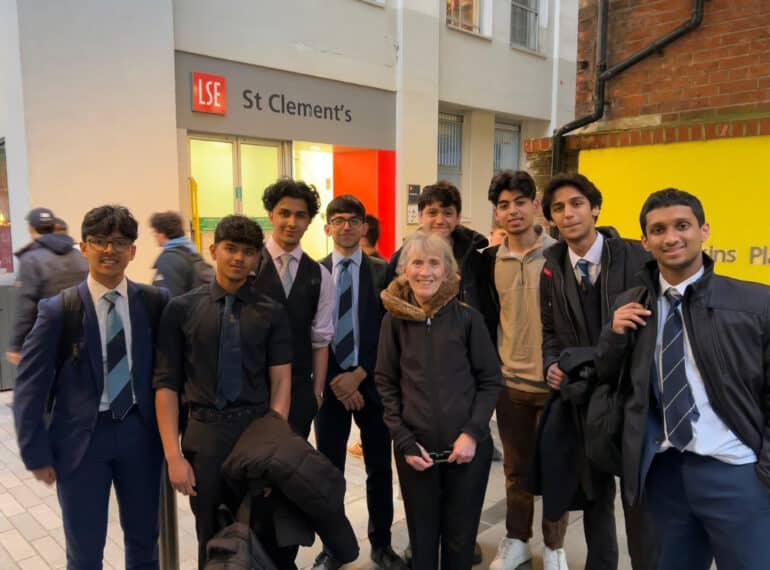
Ninety-five Year 10 boys headed off to Aberdovey for a long weekend of outdoor activities and team-building on the Welsh coast.
After the successful inaugural trip last year, the 2024 cohort again enjoyed activities that required them to learn new skills and, in many cases, to pluck up a little courage. This year, alongside the canoeing, climbing, hiking and shimmying along a rope above water, they could also practise abseiling and making a fire.
A further change from 2023’s dual trips was that the whole group went together, making the long coach journey on the same weekend.
QE Flourish tutor Celia Wallace, who led the boys and a team of eight staff, said: “It was a great weekend: the boys returned tired but exhilarated, with fresh skills learned, a few fears faced and overcome, new friendships forged, and with existing friendships deepened.”
“Through the Flourish programme, we are committed to offering our students a wide range of extra-curricular opportunities,” Dr Wallace added. “Trips such as this develop the boys not only as individuals, but in their capacity for helping one another and working as a team.”
After a journey broken by a 30-minute stop at services, the boys eventually arrived at the Outward Bound centre in Aberdovey (Aberdyfi) in Snowdonia National Park, where they were to sleep in dormitories.
Several of the participants spoke about their experience after it was all over. Krish Deebak and Parth Jain both welcomed being taken out of their ‘comfort zone’ through activities such as rock-climbing and gorge-scrambling. Tanush Madadi said: “The fact that we managed to do such a range of activities in such a short span of time was really an amazing thing.”
It was, said several, fun to try out new activities, with Namish Thakur commenting that “it was also a great way to learn new things about myself, like the fact that I’m somehow pretty good at dragging myself across a rope”.
Many of the boys readily appreciated that the benefits extended well beyond the acquisition of new physical skills. Henry Greene learned “important life lessons”, such as skills in “communication and leadership”; Alex Wang found that the trip “helped build up my confidence and leadership,”; Sriram Muthukumaran said: “It was a great opportunity to get to know others in our year that we may not be so familiar with.”
They also enjoyed the chance to do it all in a picturesque location. Danyal Rahim said: “I think my highlight of the trip would be any time we went to the beach, as it was such a beautiful landscape.”
Aryan Afghan reflected widely on the weekend. He liked the “really nice” food; the clean dormitories with “ample room” and the “great attitude” of the instructors. He thanked Dr Wallace and her team, even endorsing their decision to remove boys’ phones for the weekend. “A great idea – many of us felt a lot happier and more awake without them, and some of us didn’t want to use them on the way back because we learnt from Aberdovey that we, in fact, don’t need to be stuck to a screen all the time to have fun and enjoy ourselves.”
This was, as Suhaan Panjwani said, a time for “making many memories”, or, as Aaryav Sharma commented, summing it all up: “It was incredible.”
- To view the images below, click on the thumbnails.

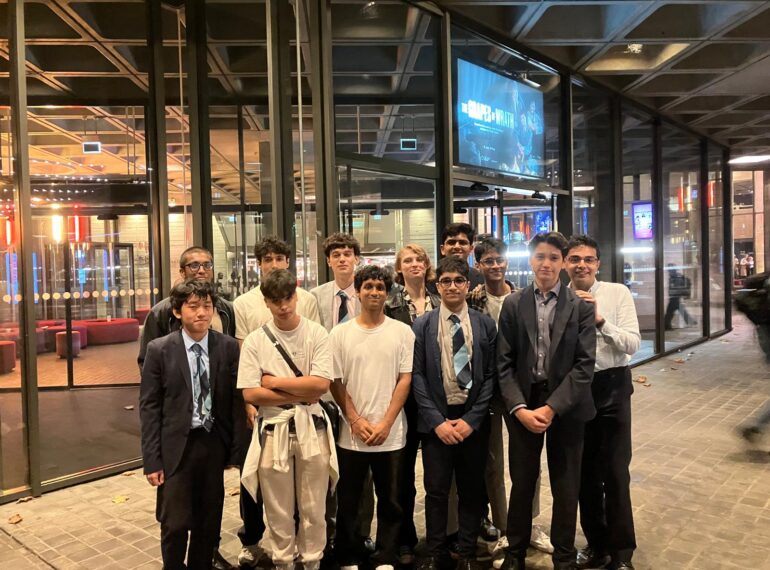
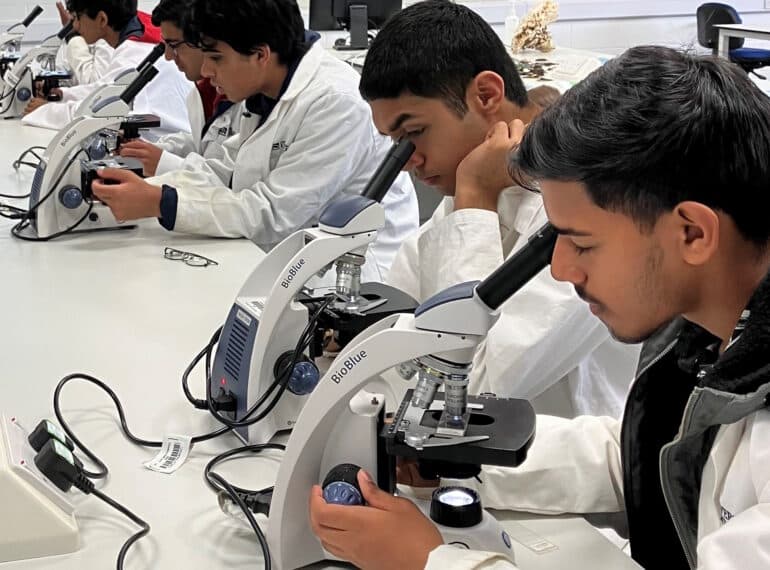
 The result was a summer trip by 25 senior pupils, who learned about the ground-breaking research at the University of Derby laboratory that aims to save the world’s coral reefs from extinction.
The result was a summer trip by 25 senior pupils, who learned about the ground-breaking research at the University of Derby laboratory that aims to save the world’s coral reefs from extinction. “The scientists at the Coral Spawning Laboratory are engaged in ground-breaking research with the aim of saving reefs from extinction, specifically in relation to the threats of ocean acidification and warming caused by human-induced changes to the carbon cycle and global warming.
“The scientists at the Coral Spawning Laboratory are engaged in ground-breaking research with the aim of saving reefs from extinction, specifically in relation to the threats of ocean acidification and warming caused by human-induced changes to the carbon cycle and global warming. The 25 participating students were drawn mainly from the current Year 13, but also from Years 11 and 12. They were accompanied by Mrs Macdonald, a Geography teacher in addition to her role as Deputy Head (Academic), and by Gillian Ridge, who is Head of Biology.
The 25 participating students were drawn mainly from the current Year 13, but also from Years 11 and 12. They were accompanied by Mrs Macdonald, a Geography teacher in addition to her role as Deputy Head (Academic), and by Gillian Ridge, who is Head of Biology. The boys enjoyed a tour of the laboratory, during which they had the opportunity to see the coral-spawning tanks and the new seagrass facility, where scientists recently succeeded in getting seagrass to flower and seed in laboratory conditions.
The boys enjoyed a tour of the laboratory, during which they had the opportunity to see the coral-spawning tanks and the new seagrass facility, where scientists recently succeeded in getting seagrass to flower and seed in laboratory conditions.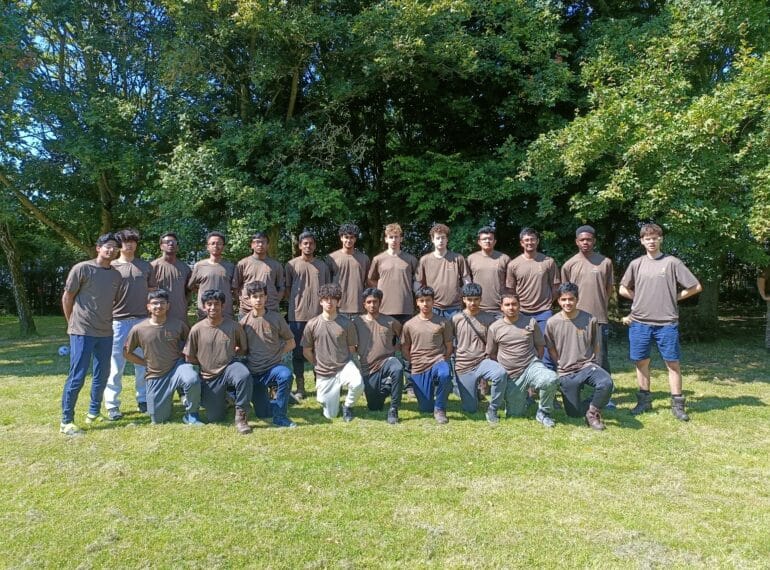
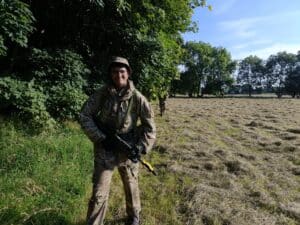 There were challenges from the weather, too: during two nights and three days out on the terrain, they had to deal first with the cold and camping on wet ground, and then with very hot temperatures towards the end. The other two nights were spent in the site’s military accommodation.
There were challenges from the weather, too: during two nights and three days out on the terrain, they had to deal first with the cold and camping on wet ground, and then with very hot temperatures towards the end. The other two nights were spent in the site’s military accommodation.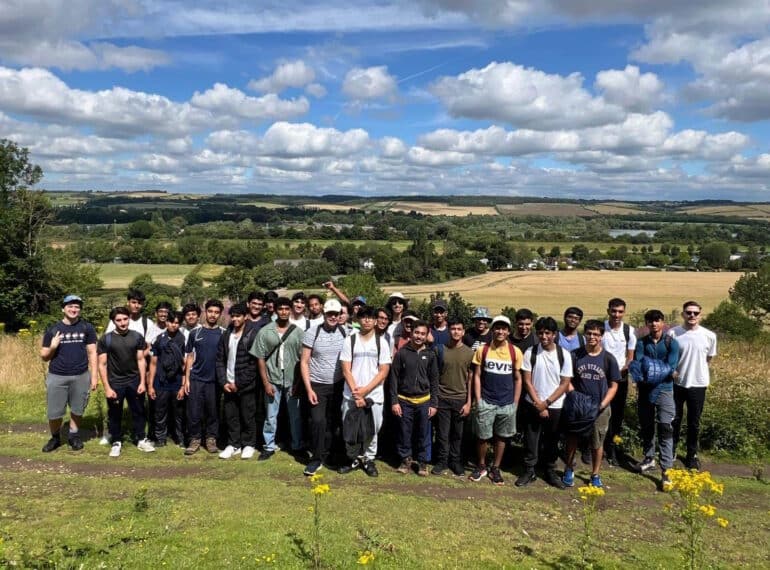
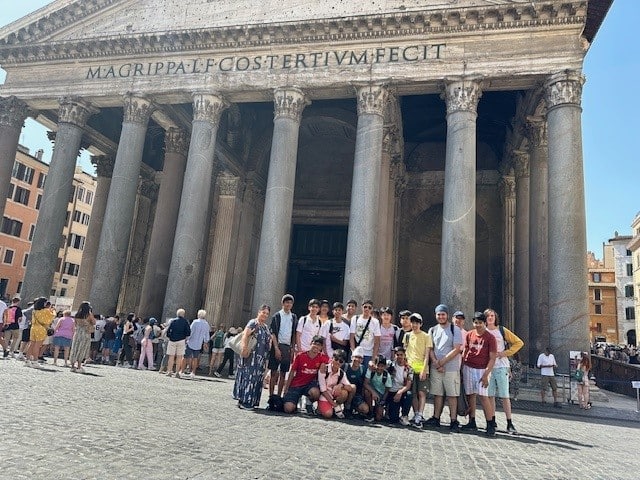
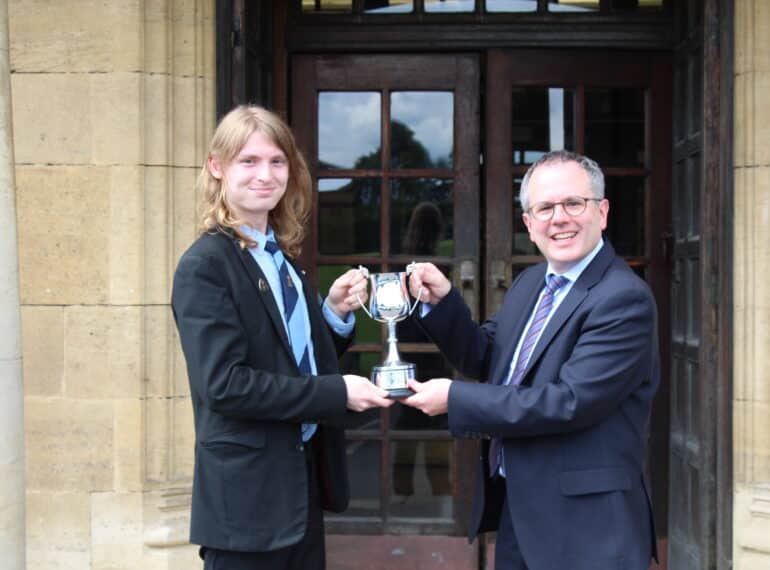
 “My congratulations go to House Captain Robin Bickers, Deputy House Captain Zeyuan Wu, and to all the members of Broughton House,” he said. “As the points totals attest, this was a closely fought contest. Points are amassed from many different areas of School life, and Broughton’s achievement thus demonstrates considerable commitment, as well as consistency across a broad range of endeavour.”
“My congratulations go to House Captain Robin Bickers, Deputy House Captain Zeyuan Wu, and to all the members of Broughton House,” he said. “As the points totals attest, this was a closely fought contest. Points are amassed from many different areas of School life, and Broughton’s achievement thus demonstrates considerable commitment, as well as consistency across a broad range of endeavour.” He told the boys that QE Flourish this year included no fewer than 200 trips, 33 of them residential. Every single member of QE’s teaching staff took part in at least one School trip. Six hundred and fifty boys had seen a live show. In total, the programme had delivered 13,508 experiences to individual pupils, Mr Bonham-Carter said.
He told the boys that QE Flourish this year included no fewer than 200 trips, 33 of them residential. Every single member of QE’s teaching staff took part in at least one School trip. Six hundred and fifty boys had seen a live show. In total, the programme had delivered 13,508 experiences to individual pupils, Mr Bonham-Carter said. The assembly also celebrated a busy year for the School’s musicians, who have been involved in eight concerts, QE’s May the fourth be almost with you Music festival, trips, charity performances, and this month’s tour to Vienna, as well as providing musical support for several formal School occasions.
The assembly also celebrated a busy year for the School’s musicians, who have been involved in eight concerts, QE’s May the fourth be almost with you Music festival, trips, charity performances, and this month’s tour to Vienna, as well as providing musical support for several formal School occasions.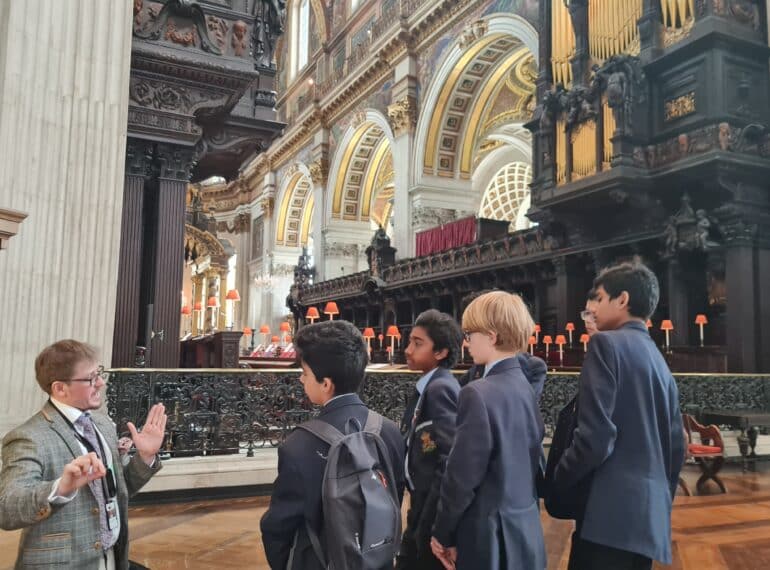
 More recently, QE pupils enjoyed a special day at St Paul’s Cathedral, where they were able to play the organs, receive a masterclass from the cathedral’s Organ Education Lead, Jeremiah Stephenson, and enjoy a privileged view of evensong. While St Paul’s sometimes hosts primary schools, QE’s was the first such visit by a secondary school.
More recently, QE pupils enjoyed a special day at St Paul’s Cathedral, where they were able to play the organs, receive a masterclass from the cathedral’s Organ Education Lead, Jeremiah Stephenson, and enjoy a privileged view of evensong. While St Paul’s sometimes hosts primary schools, QE’s was the first such visit by a secondary school.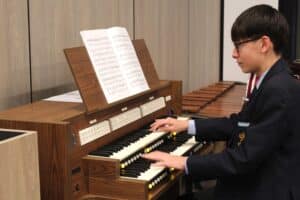 “I think it’s made a big difference, and certainly when it arrived, there was this real buzz – ‘Ooh, what is this amazing machine that’s suddenly appeared?’ – and we had quite a few pupils coming to ask to play.”
“I think it’s made a big difference, and certainly when it arrived, there was this real buzz – ‘Ooh, what is this amazing machine that’s suddenly appeared?’ – and we had quite a few pupils coming to ask to play.” The day at St Paul’s Cathedral was led by Mr Stephenson, a prize-winning graduate of Cambridge and the Royal Academy of Music.
The day at St Paul’s Cathedral was led by Mr Stephenson, a prize-winning graduate of Cambridge and the Royal Academy of Music. Organ Scholar Joel added: “I really enjoyed discovering the variety of organs there, and especially getting access to see some of the inner workings of the Royal Trumpets, high above the West Doors. It was insightful learning about some of the sound physics from Mr Stephenson.”
Organ Scholar Joel added: “I really enjoyed discovering the variety of organs there, and especially getting access to see some of the inner workings of the Royal Trumpets, high above the West Doors. It was insightful learning about some of the sound physics from Mr Stephenson.”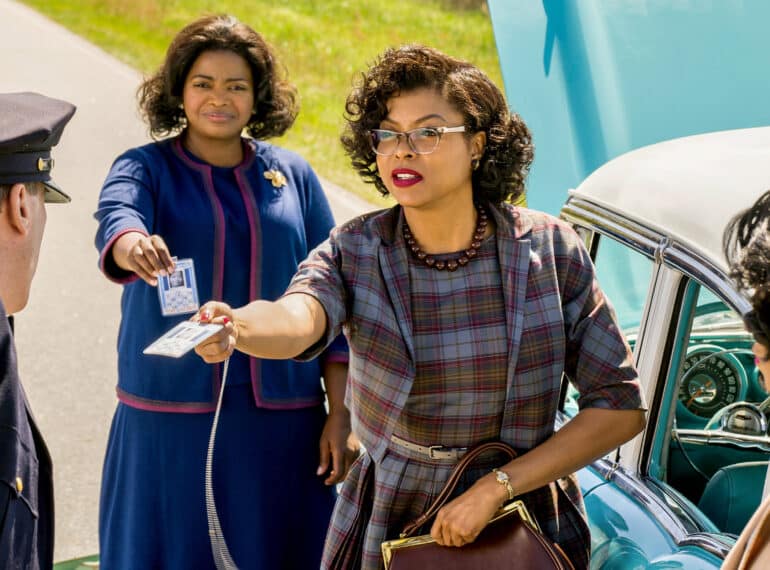
 In between these highlights, regular pastoral sessions and a special afternoon were devoted to a project looking at race, intersectionality and women in science ahead of seeing the film, Hidden Figures.
In between these highlights, regular pastoral sessions and a special afternoon were devoted to a project looking at race, intersectionality and women in science ahead of seeing the film, Hidden Figures. The boys’ project involved completing a PowerPoint presentation designed to teach them about topics such as the origins, causes and effects of the Cold War and about the Civil Rights Movement in the US.
The boys’ project involved completing a PowerPoint presentation designed to teach them about topics such as the origins, causes and effects of the Cold War and about the Civil Rights Movement in the US.